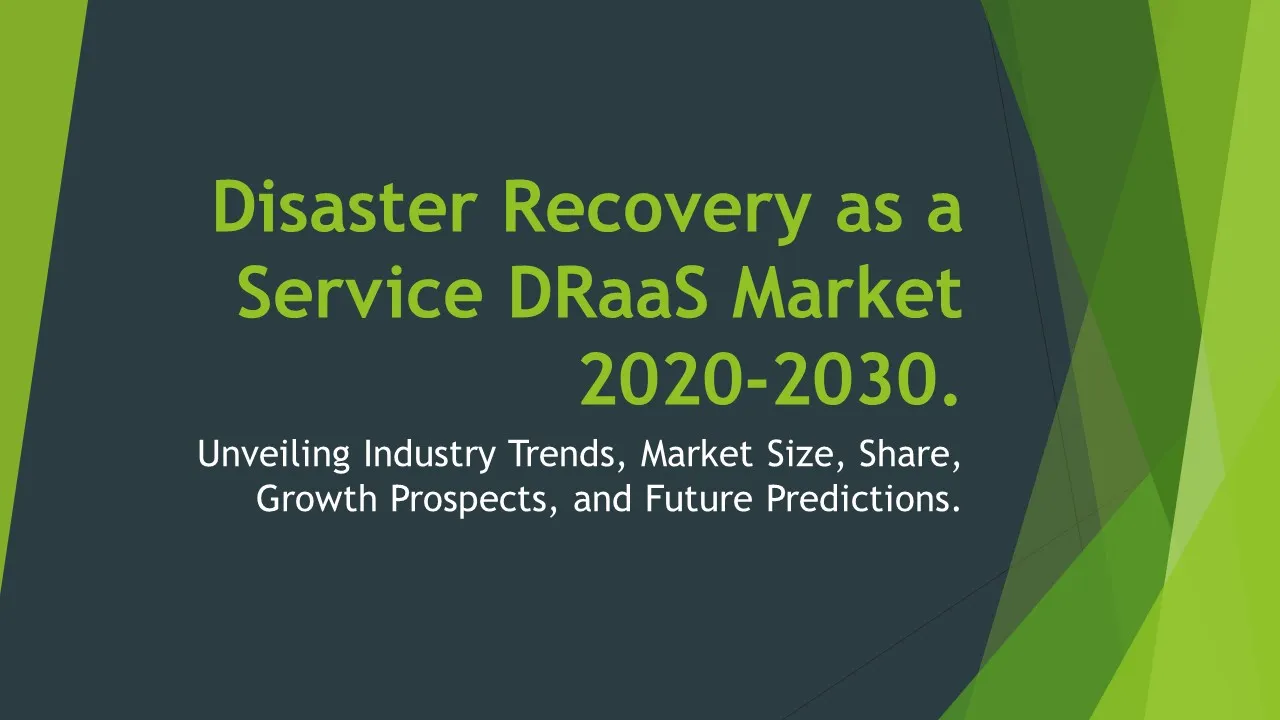Backup and Disaster Recovery Solutions
Backup and Disaster Recovery Solutions Market Segments - by Product Type (Cloud Backup, On-Premise Backup, Disaster Recovery as a Service, Backup and Recovery Software, Tape Backup), Application (Enterprise, Small and Medium-sized Enterprises, Government, Healthcare, Others), Distribution Channel (Direct Sales, Indirect Sales), Region (North America, Europe, Asia Pacific, Latin America, Middle East & Africa) - Global Industry Analysis, Growth, Share, Size, Trends, and Forecast 2025-2035
- Report Preview
- Table Of Content
- Segments
- Methodology
Backup and Disaster Recovery Solutions Market Outlook
The global Backup and Disaster Recovery Solutions market is anticipated to reach USD 25 billion by 2035, expanding at a compound annual growth rate (CAGR) of 10% from 2025 to 2035. The increasing reliance on digital data and the necessity for robust data protection mechanisms are major factors driving this growth. With the proliferation of cyber threats and the rising instances of data loss, businesses across various sectors are prioritizing data backup and recovery strategies. Furthermore, the rapid adoption of cloud computing solutions is significantly influencing market dynamics, as organizations seek flexible and scalable methods to manage their data. The need for regulatory compliance and the growing emphasis on business continuity planning play crucial roles in shaping investment in these solutions.
Growth Factor of the Market
The growth of the Backup and Disaster Recovery Solutions market is primarily fueled by the accelerating digital transformation across industries, necessitating secure data management and accessibility. As organizations increasingly shift toward cloud-based systems, they recognize the importance of integrating backup solutions to mitigate the risks of data breach or loss. Advances in technology, such as artificial intelligence and machine learning, are also enhancing recovery solutions by automating processes and improving data retrieval timelines. Moreover, stringent regulations surrounding data protection are compelling organizations to adopt comprehensive backup strategies to ensure compliance and avoid penalties. The surge in remote work trends, amplified by global events like the COVID-19 pandemic, has created an urgent need for robust backup solutions that can accommodate distributed teams and maintain operational continuity.
Key Highlights of the Market
- Rising demand for cloud-based backup solutions among enterprises and SMEs.
- Increased investment in data security measures due to rising cyber threats.
- Growing emphasis on compliance with data protection regulations.
- Shift towards hybrid backup solutions combining on-premises and cloud technologies.
- Technological advancements enhancing the efficiency of disaster recovery processes.
By Product Type
Cloud Backup:
Cloud Backup solutions are rapidly gaining traction as they provide organizations with scalable and flexible options for data storage and recovery. This type of backup allows businesses to store their data off-site in secure cloud environments, reducing the risk of data loss due to localized disasters or hardware failures. The ease of access to data from any location with internet connectivity further enhances operational efficiency. Additionally, cloud backup solutions often incorporate advanced security features such as encryption and multi-factor authentication, making them a popular choice among organizations prioritizing data security. With the increasing volume of data generated, companies are leaning toward cloud backup to ensure seamless backup processes without the burden of managing physical storage infrastructure.
On-Premise Backup:
On-Premise Backup solutions entail storing backup data on local servers or storage devices within an organization's physical premises. This backup type is preferred by organizations that require complete control over their data and wish to maintain compliance with various industry regulations. On-premise backup solutions allow for faster data recovery times since the data is stored locally, eliminating potential latency issues associated with cloud-based solutions. However, this approach often demands higher capital investments in terms of hardware and maintenance costs. Despite these challenges, many organizations find value in the customization and direct access that on-premise solutions offer, making it a viable choice for industries handling sensitive information, like finance and healthcare.
Disaster Recovery as a Service:
Disaster Recovery as a Service (DRaaS) is a managed service that offers businesses the ability to back up their IT infrastructure and data in a cloud environment. In case of a disaster, DRaaS solutions facilitate quick recovery by providing not only data recovery but also the necessary computing resources to maintain business operations. This service is particularly attractive to small and medium-sized enterprises that may not have the resources to develop and maintain their disaster recovery infrastructure. DRaaS solutions are designed to minimize downtime, enabling organizations to resume normal operations swiftly after an incident. The shift toward subscription-based models makes DRaaS financially appealing, as it allows organizations to allocate resources more effectively without large upfront investments.
Backup and Recovery Software:
Backup and Recovery Software encompasses a range of applications designed to automate and manage the backup process for various data types and environments. This software enables businesses to schedule backups, monitor data integrity, and manage recovery processes efficiently. With the increasing complexity of IT environments, including hybrid and multi-cloud setups, the need for robust backup and recovery software has grown significantly. Such software often integrates seamlessly with existing IT infrastructures, ensuring minimal disruption during backup operations. As organizations continue to prioritize data protection, the demand for advanced backup and recovery software capable of supporting diverse environments and data types is expected to increase.
Tape Backup:
Tape Backup remains a viable option for organizations needing long-term data storage solutions. Despite the rise of digital and cloud-based solutions, tape backup is favored for its cost-effectiveness, especially for archiving large volumes of data. Tape technology has advanced considerably, with modern tapes offering increased storage capacities and faster data retrieval speeds. Many organizations leverage tape backup as part of a broader data protection strategy, utilizing it for off-site storage and disaster recovery purposes. While it may not suit every organization's needs, particularly those requiring rapid access to their data, tape backup continues to be a reliable choice for businesses aiming to manage significant amounts of archival data efficiently.
By Application
Enterprise:
In the enterprise segment, organizations are investing heavily in Backup and Disaster Recovery Solutions to protect critical data and ensure business continuity. Large enterprises often handle vast amounts of sensitive information, making them prime targets for cyber-attacks and data breaches. Consequently, these organizations prioritize comprehensive data protection strategies that include regular backups and robust recovery processes. With the complexity of their IT environment, enterprises are increasingly adopting hybrid solutions that combine on-premise and cloud-based backups, enabling them to tailor their disaster recovery plans according to their specific operational requirements. The trend toward remote work has further underscored the importance of having reliable backup systems in place to mitigate risks associated with data loss.
Small and Medium-sized Enterprises:
Small and Medium-sized Enterprises (SMEs) are increasingly recognizing the importance of Backup and Disaster Recovery Solutions as they strive to protect their data against loss or corruption. These organizations often operate with limited IT resources, making it crucial to have efficient and cost-effective backup solutions in place. Cloud-based backup services are particularly appealing to SMEs, as they offer scalability and flexibility without the need for significant upfront capital investments in hardware. By utilizing these solutions, SMEs can ensure that their critical data is protected while also meeting regulatory compliance requirements. As the frequency of cyber threats continues to rise, SMEs are prioritizing disaster recovery planning, leading to the growing adoption of tailored backup solutions.
Government:
Government agencies rely heavily on Backup and Disaster Recovery Solutions to maintain the integrity and security of sensitive data. With the responsibility of safeguarding citizen information and critical infrastructure, these agencies must ensure robust data protection measures are in place. The growing threat landscape, coupled with regulatory compliance mandates, drives government organizations to adopt comprehensive backup solutions. Many government entities are transitioning to cloud-based services to enhance their disaster recovery capabilities while optimizing costs. The need for transparency and accountability also plays a role in shaping backup strategies, as agencies seek to demonstrate their commitment to data protection and public service reliability.
Healthcare:
The healthcare sector faces unique challenges in managing sensitive patient data, making Backup and Disaster Recovery Solutions essential for maintaining compliance with regulations like HIPAA. Healthcare organizations must ensure that patient information is not only secure but also readily accessible in case of data loss incidents. The adoption of electronic health records and telemedicine has accelerated the need for robust data protection strategies. Consequently, healthcare providers are increasingly turning to cloud-based backup solutions that facilitate secure storage and efficient recovery processes. By implementing comprehensive backup systems, healthcare organizations can mitigate the risks associated with data breaches, ensuring that they maintain the trust of their patients and stakeholders.
Others:
The 'Others' category encompasses various industries and organizations that require Backup and Disaster Recovery Solutions, including education, manufacturing, and retail. Each of these sectors faces distinct challenges regarding data management and protection, necessitating customized backup strategies. For instance, educational institutions must safeguard student records and research data, while manufacturers rely on backup solutions to protect critical operational data and intellectual property. Retailers, on the other hand, must ensure the protection of customer information and transaction data. As businesses across diverse sectors increasingly recognize the importance of data protection, the demand for tailored backup solutions continues to grow, driving innovation in this space.
By Distribution Channel
Direct Sales:
The Direct Sales channel for Backup and Disaster Recovery Solutions involves selling products and services directly to end-users, such as enterprises and organizations. This approach allows companies to build strong relationships with clients, offering personalized solutions that cater to their specific needs. Direct sales channels are particularly effective in providing tailored demonstrations and consultations, enabling potential clients to understand the value and capabilities of the solutions offered. Sales representatives can address customer concerns and requirements in real-time, fostering a sense of trust and reliability. As businesses continue to prioritize data protection, direct sales efforts are instrumental in driving adoption and ensuring that organizations have the right backup strategies in place.
Indirect Sales:
The Indirect Sales channel encompasses partnerships with resellers, distributors, and managed service providers to deliver Backup and Disaster Recovery Solutions to end-users. This approach allows solution providers to extend their market reach and tap into various customer segments without the need for a direct sales force. Indirect sales partners often have established relationships within specific industries, enabling them to effectively promote data protection solutions to their client base. This channel is particularly beneficial for reaching small and medium-sized enterprises that may not have the resources or expertise to manage backup solutions independently. The collaborative nature of indirect sales fosters innovation and flexibility, as partners can tailor solutions to meet the unique requirements of their customers.
By Region
North America dominates the Backup and Disaster Recovery Solutions market, accounting for approximately 40% of the global market share in 2025. The region's strong economic infrastructure, coupled with a high concentration of technology companies, facilitates widespread adoption of advanced data protection solutions. The presence of key players and increasing investments in cloud technologies further drive this growth. The CAGR for North America is projected at 11% as organizations continue to prioritize data protection amid rising cyber threats and regulatory compliance requirements. Additionally, the region's high level of digital transformation across various sectors contributes significantly to the demand for robust backup and recovery solutions.
Europe follows closely, contributing around 30% to the global market share in 2025, driven by stringent data protection regulations such as GDPR. Organizations across the region are compelled to adopt comprehensive backup solutions to ensure compliance and protect sensitive customer information. The increasing prevalence of cyberattacks and data breaches has heightened awareness about the importance of data backup and disaster recovery. The CAGR for Europe is forecasted at 9%, as businesses increasingly recognize the need for reliable data protection mechanisms. Furthermore, the growing adoption of cloud technologies is expected to enhance the region's overall market growth, as organizations seek scalable and flexible solutions.
Opportunities
With the rising threat of cyberattacks and data loss incidents, there is a significant opportunity for companies within the Backup and Disaster Recovery Solutions market to innovate and enhance their offerings. The integration of advanced technologies such as artificial intelligence and machine learning can improve data recovery processes, automate backup scheduling, and optimize storage management. Additionally, as organizations continue to shift towards remote work arrangements, the demand for secure and accessible backup solutions will increase. Companies willing to invest in research and development to create user-friendly and efficient backup solutions can capture a larger market share. Furthermore, the growing trend of hybrid cloud environments presents an opportunity for providers to offer tailored solutions that combine on-premise and cloud backups, meeting the diverse needs of businesses.
Another significant opportunity lies in the emerging markets, where businesses are increasingly recognizing the need for effective data management and protection strategies. As these markets continue to grow and digitize, the demand for Backup and Disaster Recovery Solutions will rise substantially. Companies that can establish a presence in these regions and provide scalable solutions customized to local needs will benefit from significant growth prospects. Collaborations with local IT partners and service providers can facilitate market entry and improve customer accessibility. Additionally, educational institutions, healthcare facilities, and government organizations in these regions will require robust backup solutions, creating further opportunities for growth and competitive advantage.
Threats
Despite the promising growth prospects in the Backup and Disaster Recovery Solutions market, companies face several threats that could impede their progress. One of the most significant threats is the rapidly evolving landscape of cyber threats, where hackers continually develop more sophisticated techniques to infiltrate organizational networks. This constant evolution poses a challenge for backup solution providers, as they must ensure their products remain effective against emerging threats. Additionally, the increasing frequency of ransomware attacks, where data is held hostage until a ransom is paid, highlights the need for continuous innovation in backup solutions. Organizations that fall victim to such attacks may suffer severe reputational damage and financial loss, which could deter potential customers from investing in backup solutions.
Another key threat is the pressure to reduce costs while maintaining high-quality service. As competition within the market intensifies, companies may feel compelled to lower prices to attract customers, which can impact their profit margins. This price competition could lead to a race to the bottom, where businesses cut corners on product development and support. Furthermore, the rapid pace of technological advancement requires continuous investment in research and development, which can strain financial resources. Companies that fail to keep pace with technological trends may find it difficult to stay relevant in a market characterized by constant change and innovation, posing a significant risk to their long-term sustainability.
Competitor Outlook
- Dell Technologies
- IBM Corporation
- Veeam Software
- Commvault Systems, Inc.
- Acronis
- Veritas Technologies LLC
- Carbonite, Inc.
- Microsoft Corporation
- Zerto
- Arcserve
- Unitrends
- Datto, Inc.
- Backupify
- Rubrik, Inc.
- Asigra Inc.
The competitive landscape of the Backup and Disaster Recovery Solutions market is marked by the presence of established technology giants and innovative startups. Key players are investing significantly in research and development to enhance their offerings and maintain a competitive edge. The market is characterized by a variety of products and services, catering to the diverse needs of businesses, from large enterprises to small and medium-sized organizations. Partnerships and acquisitions are common strategies employed by companies to broaden their service portfolios and expand their market reach. Additionally, the increasing focus on cloud-based solutions is reshaping the competitive dynamics, as organizations seek scalable and flexible data protection options.
Dell Technologies, a prominent player in the market, offers a comprehensive range of data protection solutions, including cloud backup and on-premise systems. With a strong focus on innovation, Dell continually enhances its offerings to address the evolving needs of its clientele. IBM Corporation, another major competitor, leverages its expertise in enterprise solutions to provide robust backup and disaster recovery services, catering to large-scale organizations across various sectors. Veeam Software has gained recognition for its innovative backup solutions, particularly in virtualized environments, and continues to expand its product offerings to meet the growing demand for data protection.
Commvault Systems, Inc. is noted for its comprehensive data management platform, which integrates backup, recovery, and cloud management solutions. The company emphasizes the importance of data governance and compliance, making it a preferred choice for organizations in regulated industries. Acronis and Veritas Technologies are also key players, each offering unique solutions that focus on securing, managing, and recovering data. These companies compete by continually enhancing their technologies and adapting to industry trends, ensuring they remain relevant in a rapidly changing market. The landscape remains dynamic, with new entrants often emerging, driven by the increasing need for effective data protection strategies across various sectors.
1 Appendix
- 1.1 List of Tables
- 1.2 List of Figures
2 Introduction
- 2.1 Market Definition
- 2.2 Scope of the Report
- 2.3 Study Assumptions
- 2.4 Base Currency & Forecast Periods
3 Market Dynamics
- 3.1 Market Growth Factors
- 3.2 Economic & Global Events
- 3.3 Innovation Trends
- 3.4 Supply Chain Analysis
4 Consumer Behavior
- 4.1 Market Trends
- 4.2 Pricing Analysis
- 4.3 Buyer Insights
5 Key Player Profiles
- 5.1 Zerto
- 5.1.1 Business Overview
- 5.1.2 Products & Services
- 5.1.3 Financials
- 5.1.4 Recent Developments
- 5.1.5 SWOT Analysis
- 5.2 Acronis
- 5.2.1 Business Overview
- 5.2.2 Products & Services
- 5.2.3 Financials
- 5.2.4 Recent Developments
- 5.2.5 SWOT Analysis
- 5.3 Arcserve
- 5.3.1 Business Overview
- 5.3.2 Products & Services
- 5.3.3 Financials
- 5.3.4 Recent Developments
- 5.3.5 SWOT Analysis
- 5.4 Backupify
- 5.4.1 Business Overview
- 5.4.2 Products & Services
- 5.4.3 Financials
- 5.4.4 Recent Developments
- 5.4.5 SWOT Analysis
- 5.5 Unitrends
- 5.5.1 Business Overview
- 5.5.2 Products & Services
- 5.5.3 Financials
- 5.5.4 Recent Developments
- 5.5.5 SWOT Analysis
- 5.6 Asigra Inc.
- 5.6.1 Business Overview
- 5.6.2 Products & Services
- 5.6.3 Financials
- 5.6.4 Recent Developments
- 5.6.5 SWOT Analysis
- 5.7 Datto, Inc.
- 5.7.1 Business Overview
- 5.7.2 Products & Services
- 5.7.3 Financials
- 5.7.4 Recent Developments
- 5.7.5 SWOT Analysis
- 5.8 Rubrik, Inc.
- 5.8.1 Business Overview
- 5.8.2 Products & Services
- 5.8.3 Financials
- 5.8.4 Recent Developments
- 5.8.5 SWOT Analysis
- 5.9 Veeam Software
- 5.9.1 Business Overview
- 5.9.2 Products & Services
- 5.9.3 Financials
- 5.9.4 Recent Developments
- 5.9.5 SWOT Analysis
- 5.10 Carbonite, Inc.
- 5.10.1 Business Overview
- 5.10.2 Products & Services
- 5.10.3 Financials
- 5.10.4 Recent Developments
- 5.10.5 SWOT Analysis
- 5.11 IBM Corporation
- 5.11.1 Business Overview
- 5.11.2 Products & Services
- 5.11.3 Financials
- 5.11.4 Recent Developments
- 5.11.5 SWOT Analysis
- 5.12 Dell Technologies
- 5.12.1 Business Overview
- 5.12.2 Products & Services
- 5.12.3 Financials
- 5.12.4 Recent Developments
- 5.12.5 SWOT Analysis
- 5.13 Microsoft Corporation
- 5.13.1 Business Overview
- 5.13.2 Products & Services
- 5.13.3 Financials
- 5.13.4 Recent Developments
- 5.13.5 SWOT Analysis
- 5.14 Commvault Systems, Inc.
- 5.14.1 Business Overview
- 5.14.2 Products & Services
- 5.14.3 Financials
- 5.14.4 Recent Developments
- 5.14.5 SWOT Analysis
- 5.15 Veritas Technologies LLC
- 5.15.1 Business Overview
- 5.15.2 Products & Services
- 5.15.3 Financials
- 5.15.4 Recent Developments
- 5.15.5 SWOT Analysis
- 5.1 Zerto
6 Market Segmentation
- 6.1 Backup and Disaster Recovery Solutions Market, By Application
- 6.1.1 Enterprise
- 6.1.2 Small and Medium-sized Enterprises
- 6.1.3 Government
- 6.1.4 Healthcare
- 6.1.5 Others
- 6.2 Backup and Disaster Recovery Solutions Market, By Product Type
- 6.2.1 Cloud Backup
- 6.2.2 On-Premise Backup
- 6.2.3 Disaster Recovery as a Service
- 6.2.4 Backup and Recovery Software
- 6.2.5 Tape Backup
- 6.3 Backup and Disaster Recovery Solutions Market, By Distribution Channel
- 6.3.1 Direct Sales
- 6.3.2 Indirect Sales
- 6.1 Backup and Disaster Recovery Solutions Market, By Application
7 Competitive Analysis
- 7.1 Key Player Comparison
- 7.2 Market Share Analysis
- 7.3 Investment Trends
- 7.4 SWOT Analysis
8 Research Methodology
- 8.1 Analysis Design
- 8.2 Research Phases
- 8.3 Study Timeline
9 Future Market Outlook
- 9.1 Growth Forecast
- 9.2 Market Evolution
10 Geographical Overview
- 10.1 Europe - Market Analysis
- 10.1.1 By Country
- 10.1.1.1 UK
- 10.1.1.2 France
- 10.1.1.3 Germany
- 10.1.1.4 Spain
- 10.1.1.5 Italy
- 10.1.1 By Country
- 10.2 Asia Pacific - Market Analysis
- 10.2.1 By Country
- 10.2.1.1 India
- 10.2.1.2 China
- 10.2.1.3 Japan
- 10.2.1.4 South Korea
- 10.2.1 By Country
- 10.3 Latin America - Market Analysis
- 10.3.1 By Country
- 10.3.1.1 Brazil
- 10.3.1.2 Argentina
- 10.3.1.3 Mexico
- 10.3.1 By Country
- 10.4 North America - Market Analysis
- 10.4.1 By Country
- 10.4.1.1 USA
- 10.4.1.2 Canada
- 10.4.1 By Country
- 10.5 Middle East & Africa - Market Analysis
- 10.5.1 By Country
- 10.5.1.1 Middle East
- 10.5.1.2 Africa
- 10.5.1 By Country
- 10.6 Backup and Disaster Recovery Solutions Market by Region
- 10.1 Europe - Market Analysis
11 Global Economic Factors
- 11.1 Inflation Impact
- 11.2 Trade Policies
12 Technology & Innovation
- 12.1 Emerging Technologies
- 12.2 AI & Digital Trends
- 12.3 Patent Research
13 Investment & Market Growth
- 13.1 Funding Trends
- 13.2 Future Market Projections
14 Market Overview & Key Insights
- 14.1 Executive Summary
- 14.2 Key Trends
- 14.3 Market Challenges
- 14.4 Regulatory Landscape
Segments Analyzed in the Report
The global Backup and Disaster Recovery Solutions market is categorized based on
By Product Type
- Cloud Backup
- On-Premise Backup
- Disaster Recovery as a Service
- Backup and Recovery Software
- Tape Backup
By Application
- Enterprise
- Small and Medium-sized Enterprises
- Government
- Healthcare
- Others
By Distribution Channel
- Direct Sales
- Indirect Sales
By Region
- North America
- Europe
- Asia Pacific
- Latin America
- Middle East & Africa
Key Players
- Dell Technologies
- IBM Corporation
- Veeam Software
- Commvault Systems, Inc.
- Acronis
- Veritas Technologies LLC
- Carbonite, Inc.
- Microsoft Corporation
- Zerto
- Arcserve
- Unitrends
- Datto, Inc.
- Backupify
- Rubrik, Inc.
- Asigra Inc.
- Publish Date : Jan 21 ,2025
- Report ID : IT-69182
- No. Of Pages : 100
- Format : |
- Ratings : 4.5 (110 Reviews)
Related reports









